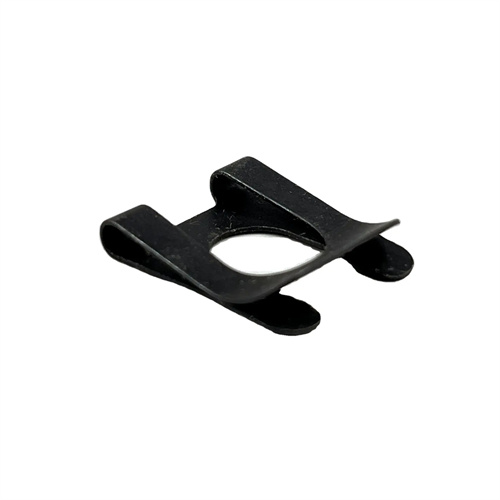Lead brass needle rod
Leaded brass header rods are a type of brass material specifically used for connector headers. They offer excellent conductivity, machinability, and dimensional stability, making them indispensable in the fields of electronics, automotive wiring harnesses, and medical devices. Primarily made from leaded brasses such as HPb62-2 and HPb59-3 , they contain 58-63% copper and 2-3% lead. The high copper content ensures excellent conductivity (conductivity ≥25% IACS), while the addition of lead facilitates machining, resulting in a smooth surface finish (roughness Ra ≤ 0.8μm). Compared to standard brass rods, header rods require higher straightness (≤0.5mm/m) and a diameter tolerance of ±0.01mm to ensure accurate positioning during header machining, preventing pin tilting or poor contact.

The production process for lead-brass needle-holder rods requires strict control of dimensional accuracy and internal quality. It primarily involves smelting, rolling/extrusion, drawing, and annealing. First, electrolytic copper and lead ingots are smelted in a medium-frequency induction furnace at a controlled temperature of 1100-1150°C. A small amount of deoxidizer (such as phosphor copper) is added to remove impurities and ensure a pure melt. The ingots are hot-rolled or extruded into rod blanks with a diameter of 20-50mm. They are then drawn through multiple passes, gradually reducing the diameter to the target diameter (typically 3-20mm). Diamond dies are used during the drawing process, and deformation is controlled at 10-15% per pass to ensure dimensional accuracy. An intermediate annealing treatment (at 450-550°C) eliminates work hardening and maintains a hardness of HB70-90, facilitating subsequent precision machining. The finished rods undergo straightening (straightness ≤ 0.3mm/m), cleaning, and eddy current testing to ensure the absence of internal defects and surface scratches. Finally, precision measurement is performed to ensure that the diameter tolerance and roundness meet the required standards.

In the field of electronic communications, lead brass pin header rods are a core material for connector pin headers. Mobile phone chargers’ USB interface pin headers are machined from HPb62-2 pin header rods. The pinhole positioning structure is formed through precision turning, with a hole position tolerance of ±0.005mm, ensuring precise docking between the plug and the socket. After adopting this material, one charger manufacturer reduced the interface defect rate to below 0.1%. 5G base station signal connector pin headers use pin header rods with a diameter of 5-10mm. Their excellent conductivity reduces signal transmission loss, while their high dimensional accuracy ensures simultaneous contact of multiple pins. Tests by a communications equipment company showed that connectors using high-quality pin header rods reduced signal attenuation by 15%. In data center server interfaces, pin headers machined from pin header rods can withstand over 100,000 plugging and unplugging cycles while maintaining stable contact performance.

The automotive wiring harness and medical device sectors have specific performance requirements for leaded brass header rods. Automotive wiring harness connectors utilize HPb59-3 header rods, which must withstand temperature fluctuations ranging from -40°C to 125°C. The material’s stability ensures the headers do not deform under extreme temperatures. Environmental testing by one automotive manufacturer showed that headers made of this material maintained a ≤5% change in insertion and extraction force after 1,000 hot and cold cycles. High-voltage connectors for new energy vehicles, due to their high currents (≥100A), utilize large-diameter header rods (15-20mm). This increases contact area, reducing resistance and heat generation. Using this material in their fast-charging connectors, one electric vehicle brand reported a 10% increase in charging efficiency. In medical devices, infusion pump interface headers utilize low-lead header rods (≤0.01%), meeting biocompatibility requirements and ensuring no lead leaching when in contact with medications. By adopting this material, one medical device company reduced FDA certification time for its products by 30%.

As electronic devices evolve toward miniaturization and higher reliability, the performance and production technology of lead brass needle hub rods continue to upgrade. Manufacturers are developing ultrafine-grained lead brass to improve the material’s strength (tensile strength ≥ 400MPa) and wear resistance, thereby extending the life of the needle hub. To meet high-precision requirements, ultrafine needle hub rods with diameters of 1-3mm are developed, with a diameter tolerance of ±0.003mm to meet the manufacturing requirements of micro-connectors. Regarding environmental protection, lead-free brass needle hub rods (such as Cu-Zn-Sn alloys) are being promoted. Their conductivity and cutting performance approach those of traditional lead brass, making them compatible with environmental regulations in regions such as the European Union and North America. In the future, with the development of industries such as autonomous driving and medical electronics, the requirements for the precision and reliability of needle hub rods will further increase, driving production processes toward intelligent and green development and providing key material support for high-end connectors.
